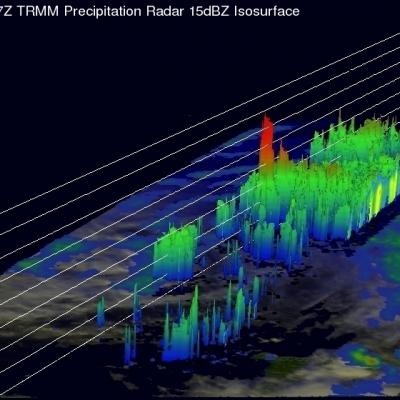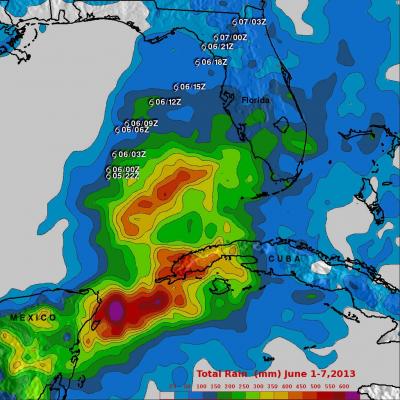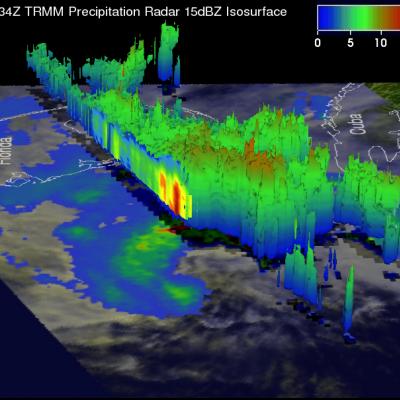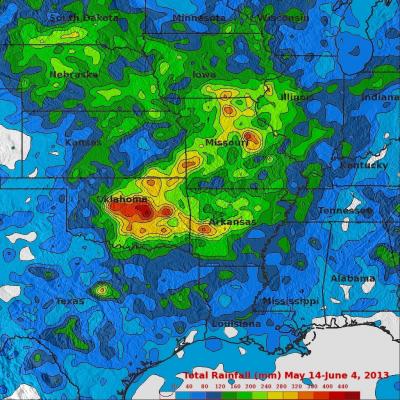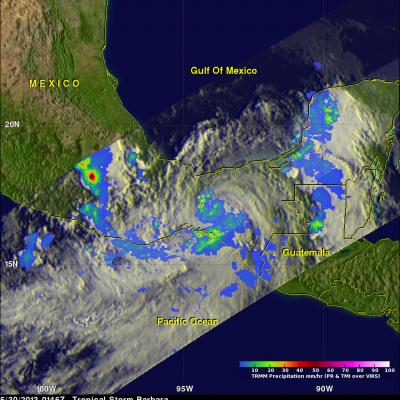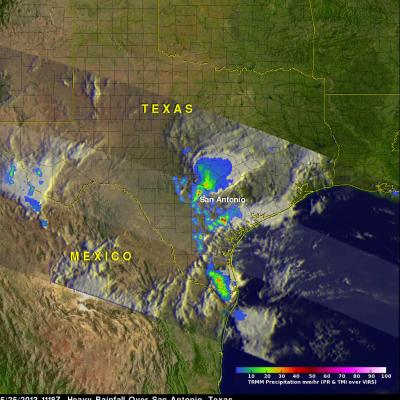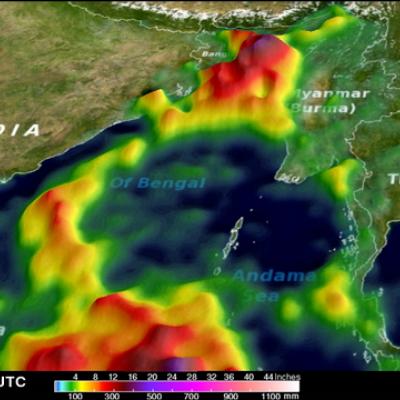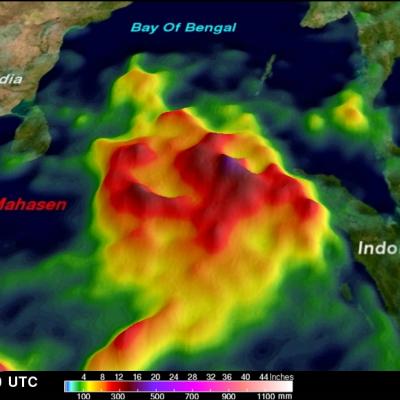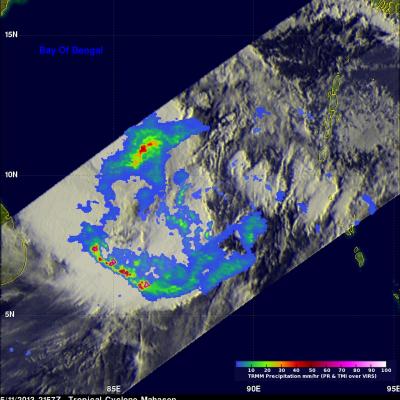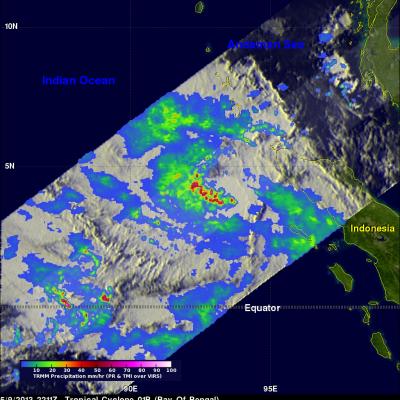Tropical Storm Leepi East Of The Philippines
Today TRMM satellite also flew above tropical storm Leepi just to the east of the Philippines at 0947 UTC. Data from TRMM's Microwave Imager (TMI) and Precipitation Radar (PR) instruments found the most intense rainfall in powerful storms near Leepi's center and in rain bands spiraling into Leepi from the south. TRMM PR data were used to make this 3-D view of tropical storm Leepi's vertical structure. Some of the powerful storms near Leepi's center reached heights above 16.5km (~10.25 miles). Tropical storm Leepi is predicted by the Joint Typhoon Warning Center (JTWC) to increase slightly in


